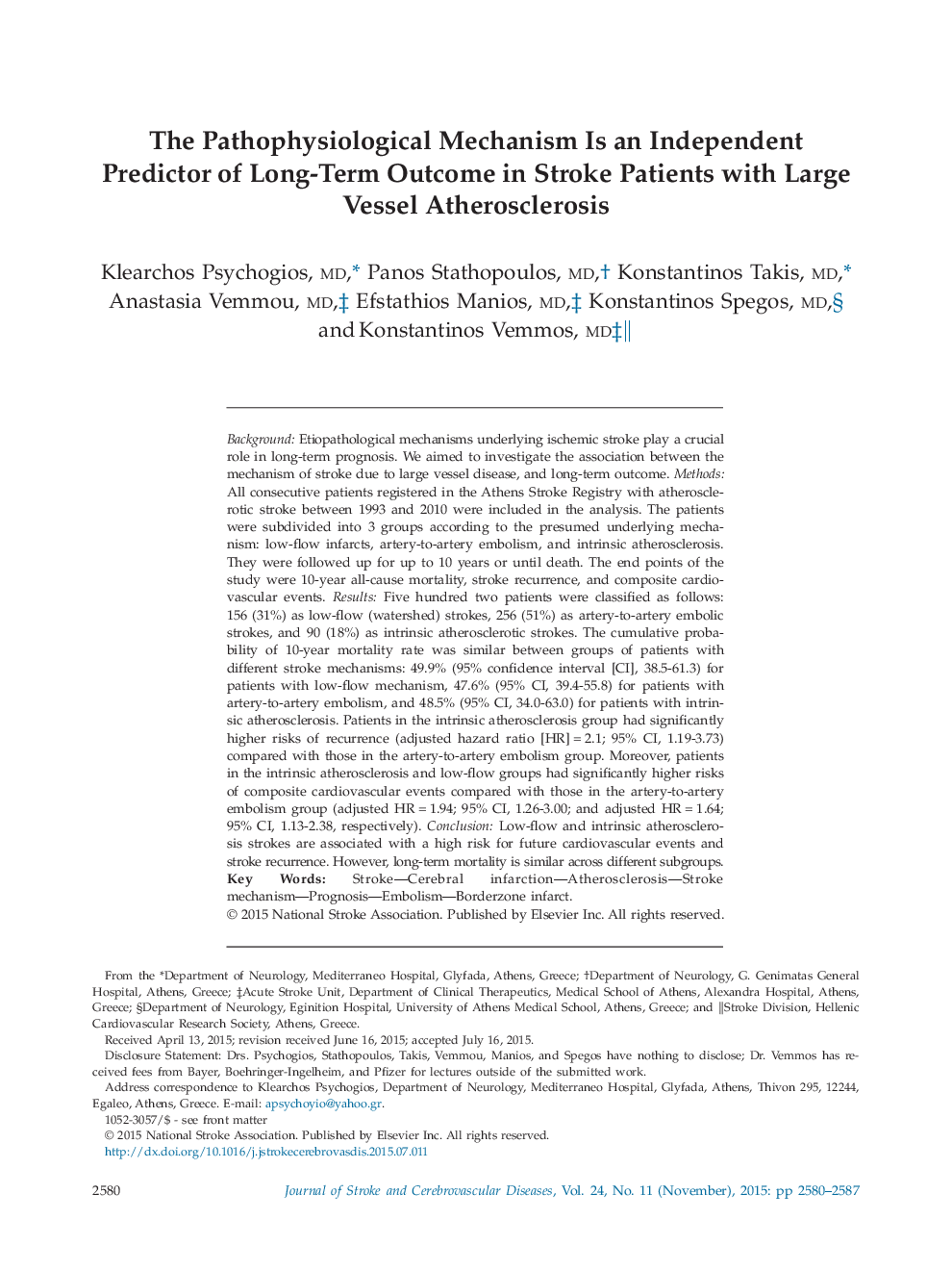| کد مقاله | کد نشریه | سال انتشار | مقاله انگلیسی | نسخه تمام متن |
|---|---|---|---|---|
| 2702430 | 1144536 | 2015 | 8 صفحه PDF | دانلود رایگان |
Background: Etiopathological mechanisms underlying ischemic stroke play a crucial role in long-term prognosis. We aimed to investigate the association between the mechanism of stroke due to large vessel disease, and long-term outcome. Methods: All consecutive patients registered in the Athens Stroke Registry with atherosclerotic stroke between 1993 and 2010 were included in the analysis. The patients were subdivided into 3 groups according to the presumed underlying mechanism: low-flow infarcts, artery-to-artery embolism, and intrinsic atherosclerosis. They were followed up for up to 10 years or until death. The end points of the study were 10-year all-cause mortality, stroke recurrence, and composite cardiovascular events. Results: Five hundred two patients were classified as follows: 156 (31%) as low-flow (watershed) strokes, 256 (51%) as artery-to-artery embolic strokes, and 90 (18%) as intrinsic atherosclerotic strokes. The cumulative probability of 10-year mortality rate was similar between groups of patients with different stroke mechanisms: 49.9% (95% confidence interval [CI], 38.5-61.3) for patients with low-flow mechanism, 47.6% (95% CI, 39.4-55.8) for patients with artery-to-artery embolism, and 48.5% (95% CI, 34.0-63.0) for patients with intrinsic atherosclerosis. Patients in the intrinsic atherosclerosis group had significantly higher risks of recurrence (adjusted hazard ratio [HR] = 2.1; 95% CI, 1.19-3.73) compared with those in the artery-to-artery embolism group. Moreover, patients in the intrinsic atherosclerosis and low-flow groups had significantly higher risks of composite cardiovascular events compared with those in the artery-to-artery embolism group (adjusted HR = 1.94; 95% CI, 1.26-3.00; and adjusted HR = 1.64; 95% CI, 1.13-2.38, respectively). Conclusion: Low-flow and intrinsic atherosclerosis strokes are associated with a high risk for future cardiovascular events and stroke recurrence. However, long-term mortality is similar across different subgroups.
Journal: Journal of Stroke and Cerebrovascular Diseases - Volume 24, Issue 11, November 2015, Pages 2580–2587
